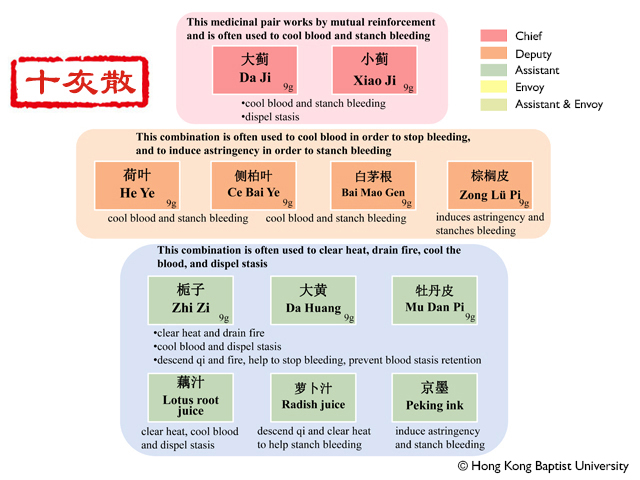Ten Charred Substances Powder
Action:Cools blood and stanches bleeding.
Indication:Shi Hui San is indicated for hemorrhages due to blood heat. Examples include vomiting of blood, spitting of blood, expectoration of blood, coughing of blood, nosebleed. If the color of the blood is bright red, the situation is acute and severe. The tongue body is red and the pulse is rapid.

